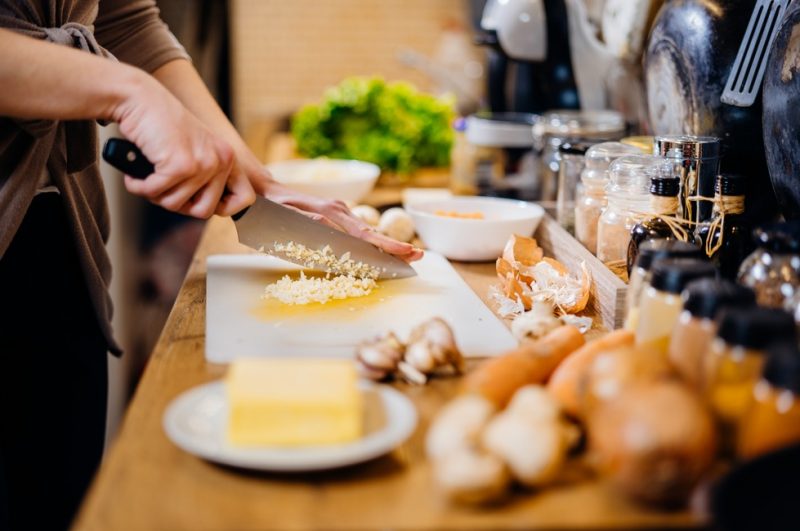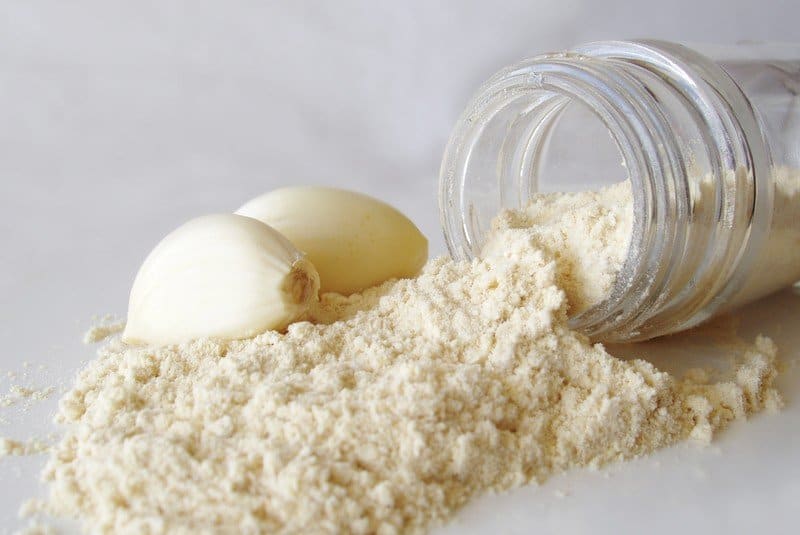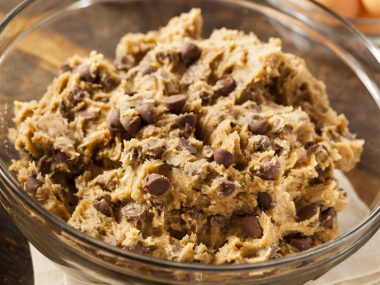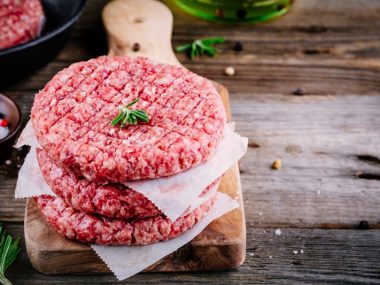Garlic is most often cooked, included in dishes that are sautéed, baked, stir-fried, braised, roasted, minced into ground meat preparations, or added to marinades, soups, spice rubs, soaked in olive oil or made into tapenades. Truly, garlic adds another layer of flavor to every dish that you can find this humble but versatile ingredient in.
Garlic is a pantry staple. What if you don’t enjoy the process of peeling, slicing, grating, chopping, mincing, or any handling of fresh garlic? The powdered version and fresh version of garlic are not always interchangeable, but they are best their own ingredient.
What is the difference between garlic powder and minced fresh garlic? Minced garlic is fresher and gives a punchier flavor than garlic powder, but garlic powder has an intense flavor from a little amount and is easier to use straight out of a bottle or jar and doesn’t burn easily.
Garlic Powder vs Minced Garlic
| Factor | Garlic Powder | Minced Garlic |
| Taste & Flavor |
|
|
| How to cook with |
|
|
| Pros |
|
|
| Cons |
|
|
| 1 garlic clove equivalent |
(x number of ave. cloves in a garlic head = equal to one garlic head) |
|
| Can one substitute for the other? |
|
|
Garlic Powder
Garlic powder is dehydrated garlic cloves that are finely ground into pulverized particles.
Garlic Powder’s Taste & Flavor
Garlic powder tastes sweeter and has a less assertive taste than fresh garlic. It does not have an overpowering raw garlic note. In less salted dishes, garlic powder brings out a brighter flavor to the mix.
Garlic powder may be likened to MSG, in that when mixed in a dish, it has a mellow undertone that lends a fullness of flavor but is not entirely discernable. Its taste is consistently flat that gives an umami essence.
How to Cook with Garlic Powder
It’s most popularly used in:
- Stews
- Soups
- Sauces
- Marinades
- Dry spice rubs
- Seasoning mixes
- Braises
- Baking and Broiling (Where food is subjected to high heat and might burn easily!)
Garlic powder blends in and spreads or disperses perfectly in dishes that are water content-sensitive, for example in meatballs and a chicken cutlet, each powder granule embraces the meat well and does not clump together and leave a sticky residue.
Important Notes for Garlic Powder
Tomato and the flavor of garlic is a perfect combination, we all know that. As tomato is acidic, when mixing in garlic powder to acid, you would need to reconstitute your desired amount of powder in the same amount of water and let it stand for about 2-5 minutes before you add it in. This process brings out the maximum garlicky flavor of the powder.
Is garlic salt the same as garlic powder? Generally, you can use garlic powder instead of garlic salt but not the other way around. If you do, you might end up with too much salt – garlic salt is three-parts salt to one-part garlic powder.
Minced Garlic
Minced garlic is simply finely chopped fresh garlic. Minced garlic is not to be confused with chopped garlic – which is coarser or larger and has more of a bite compared to the tiny bits of minced garlic.
To be more specific, minced garlic is about less than 1/16 inch in diameter, while chopped garlic is typically about or no more than 1/8 inch.
Mincing garlic is a knife skill, check out this video on how to peel and mince garlic clove.
Minced Garlic’s Taste & Flavor
Minced garlic is simply finely chopped fresh garlic.
Let’s breakdown the flavor differences from each type of garlic clove slice.
- Whole cloves: mild flavor
- Large size cloves: mild flavor
- Chopped cloves: medium flavor
- Minced cloves: full flavor
- Smashed cloves: intense flavor
Minced garlic, compared to garlic powder, has not been dehydrated and pulverized, it has the strong, punchy, sharp almost-spicy taste that fresh garlic is known for.
Minced garlic has a high potent garlic flavor. Two substances are present in garlic which is alliin and alliinase; when these two substances interact through a chemical reaction that happens when the garlic clove’s cells are broken down by cutting, crushing, slicing, and mincing, etc. it allows for maximum release of allicin – the Sulphur compound which is responsible for the aroma and the ‘bite’ of fresh garlic.
How to Cook with Minced Garlic
The important thing to note with cooking freshly minced garlic is not where to use it, there are myriad ways and recipes to cook with minced garlic.
It is the ‘how’ that is tricky to get the full flavor of minced garlic.
Sautéing
- Use a pan or skillet with a heavy bottom for even heating.
- Heat the oil or butter in low to medium heat before putting in the garlic.
- Soften the other ingredients (that take longer to cook) in the sauté, before you add your minced garlic.
- Stir consistently.
Roasting
- Preheat oven to 325 to 350 degrees Fahrenheit.
- In a shallow pan, spread the minced garlic and cover with oil.
- Cover the dish with a pan with foil and roast for only ten minutes. Anything longer and the garlic will burn!
- Optional: Sprinkle salt over the minced garlic.
Frying
- Similar to sautéing, use a heavy-bottomed pan or skillet.
- Subject oil to heat, before it smokes is the time to add in the minced garlic.
- Minced garlic browns easily so remove it when it turns slightly golden beige as waiting for it to brown is waiting for it to burn! Garlic still cooks on its own a bit after removing it from heat.
Other ways
- When cooking it with herbs, mince the garlic cloves along with the herbs – this method helps the garlic stick to the herbs instead of making the knife sticky and the flavor is infused.
- Pre-soak minced garlic in your choice of oil, or melted fat such as butter or ghee, before adding into your preferred dish to infuse the garlic taste and disperse it in the dish properly.




